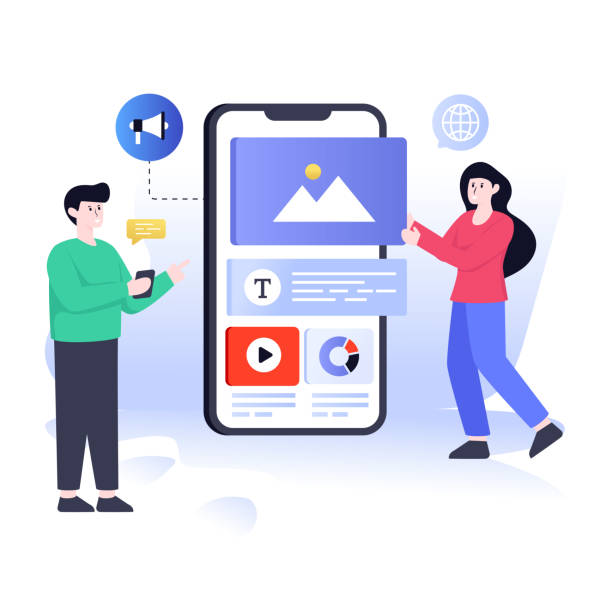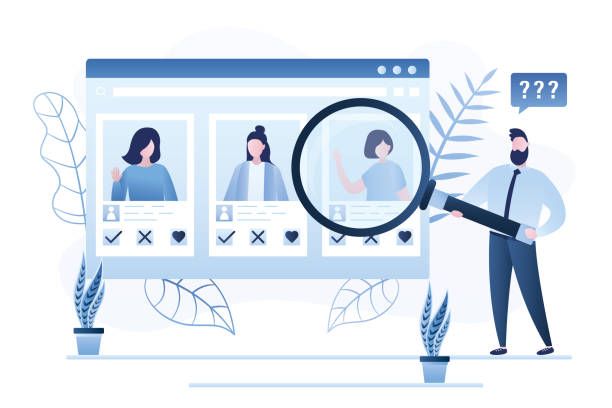The Importance and Necessity of Designing a Personal Website in Today’s World
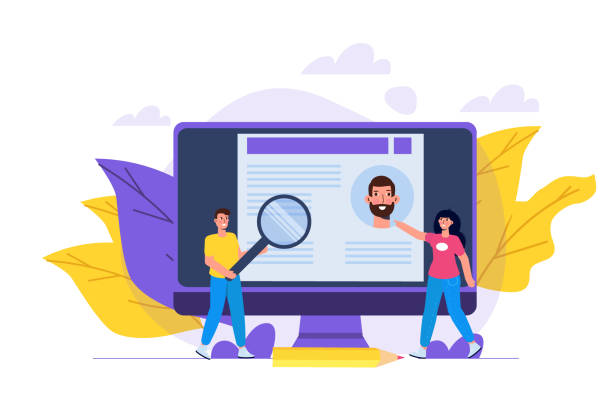
In the current digital age, having a #personal_website is no longer a luxury, but an undeniable necessity.
This online platform allows you to fully manage and showcase your #digital_identity.
Whether you are an artist, writer, professional, or entrepreneur; personal website design helps you strengthen your personal brand and reach a wider audience.
This space allows you to present your resume, portfolio, thoughts, and experiences in a professional and organized manner.
In fact, your personal website acts as a dynamic digital business card that is always available and can provide visitors with the necessary information anytime, anywhere.
By creating a personal website, you will have complete control over how your information is displayed, unlike social networks that have their own rules and algorithms.
This tutorial shows you from scratch how to build a powerful online presence for yourself from zero to one hundred.
Have you ever wondered how you can introduce your ideas and expertise to the world without intermediaries and without the limitations of other platforms? This guide answers these thought-provoking questions and assists you in your personal website design journey.
Are you tired of losing business opportunities due to not having a professional company website?
Rasaweb helps you with professional company website design:
✅ Build a powerful and reliable image of your brand
✅ Convert website visitors into loyal customers
⚡ Get a free consultation now!
Defining Goals and Audience Identification in the Design Process
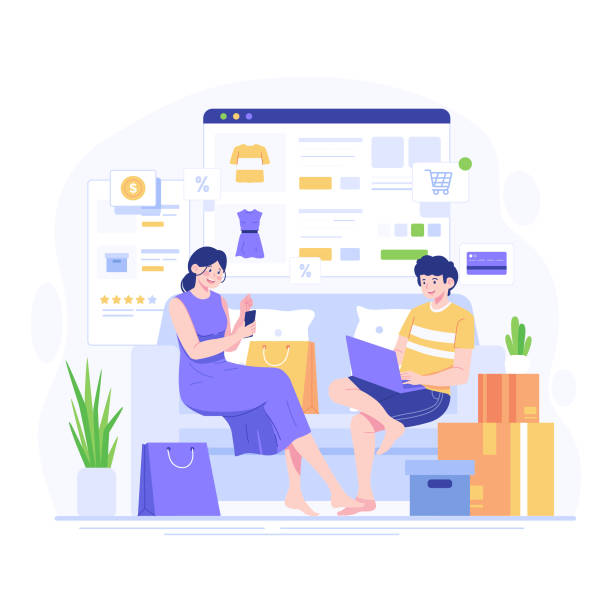
Before taking any practical steps for personal website design, it is essential to clearly define your goals and identify your target audience.
This guiding and highly critical stage will shape all your subsequent decisions, including template selection, content, and even color scheme, based on these goals and audience understanding.
Ask yourself: “Why do I need a personal website?” Is your goal merely to display your resume and portfolio? Do you intend to act as a blogger and share specific content with others? Do you want to offer training courses or sell your products? The answers to these questions will determine the overall direction of your personal website design.
After that, you need to identify your target audience.
Who will visit your website? What is their age range? What information are they interested in? What needs do they have that you can address? A thorough understanding of your audience helps you create content that is engaging and useful for them.
For example, if your audience is employers, you should present your resume and portfolio in a formal and professional manner.
However, if your audience is students, you can use a more friendly tone and educational content with more tangible examples.
This stage involves deep analytical thinking that lays the foundation for a successful website.
A website without clear goals is like a ship without a captain, adrift in the vast ocean of the internet.
Choosing the Right Platform and Tools for Website Creation
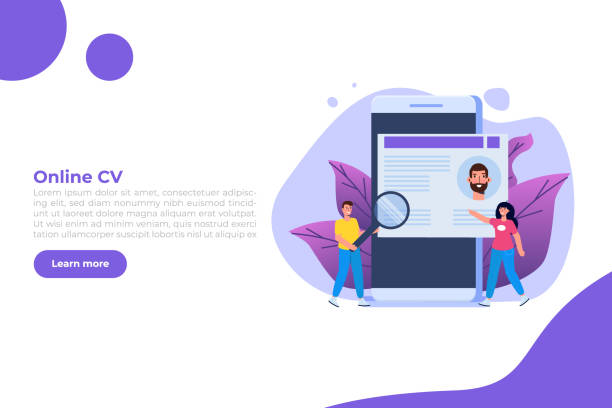
One of the most important steps in personal website design is choosing the right platform.
There are numerous options available, each with its own advantages and disadvantages.
Content Management Systems (CMS) such as WordPress, Joomla, and Drupal are among the most popular choices.
WordPress, due to its high flexibility, large number of themes and plugins, and extensive user community, is an excellent option for most people.
On the other hand, Website Builders like Wix, Squarespace, or Weebly are suitable options for individuals with less technical knowledge who want to design their website quickly using drag & drop functionality.
Choosing the right tool for building your personal website depends on your technical knowledge, budget, and specific needs.
This stage is a specialized choice that requires careful consideration.
For example, if you intend to have a website with complex features and extensive customization, WordPress, with its ability to install various plugins and access to code, would be a better option.
But if you just need an online resume or a simple personal page, a website builder might suffice.
Below is a comparison table of popular platforms to help you make a decision.
| Platform | Pros | Cons | Best for |
|---|---|---|---|
| WordPress | High flexibility, many plugins, SEO Friendly, full control | Initial learning curve, maintenance responsibility | Blogs, professional websites, small stores |
| Wix | Easy to use, beautiful templates, Drag & Drop | Less flexibility, limitations in free plans | Portfolios, simple personal websites, small businesses |
| Squarespace | Modern and professional designs, good support | More expensive, moderate flexibility, no code access | Artists, photographers, visually focused websites |
Principles of UI/UX Design and Optimal User Experience

Personal website design is not just about a beautiful appearance; User Experience (UX) and User Interface (UI) play a crucial role in its success.
UI (User Interface) refers to the visual look and interaction of your website, while UX (User Experience) addresses the user’s overall feeling when interacting with your website.
A good UX design makes your website user-friendly, accessible, and enjoyable.
This includes logical layout, easy navigation, fast loading speed, and responsive design for proper display on all devices, including mobile phones and tablets.
A brief explanation of the importance of this topic is that today’s users are impatient and quickly leave a website if it is slow or difficult to find information on.
For personal website design with optimal UI/UX, pay attention to simplicity and minimalism; avoid clutter and unnecessary elements.
Using appropriate white space, readable fonts, and correct color contrast all help improve the visual experience.
Call-to-Action buttons should be clear and identifiable.
Navigation paths should be logical and predictable so that users can easily access different sections of the website.
Adherence to these technical principles not only helps attract and retain visitors but also makes your website appear more professional and credible.
Remember that a successful personal website is one that not only presents information well but also allows users to enjoy browsing it and have a positive experience.
Are you losing business opportunities because of an outdated website? With Rasaweb, permanently solve the problem of not attracting potential customers through your website!
✅ Attract more high-quality leads
✅ Increase brand credibility in the eyes of customers
⚡ Get a free company website design consultation
Strategy for Creating Engaging and Targeted Content
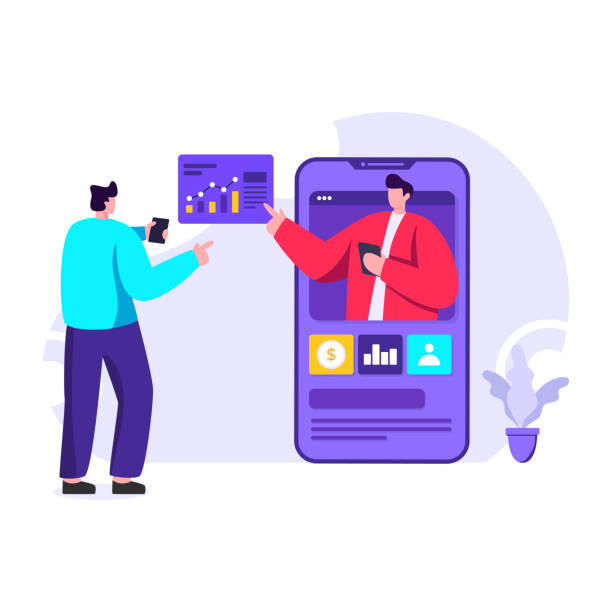
Content is king; this statement holds truer than ever in the digital world, especially regarding personal website design.
After the technical design phase is complete, it’s time to produce content that not only conveys your information but also attracts and connects with your audience.
Your content should be targeted and relevant to your website’s goals and your audience’s needs.
Is your content educational? Is it entertaining? Or does it present your portfolio and resume? For a personal website, content can include blog articles, portfolios, client testimonials, an About Me section, contact information, and even multimedia content such as images and videos.
When creating content, prioritize quality over quantity.
High-quality, original content with added value for the audience not only attracts them but also helps improve your website’s ranking in search engines.
Using relevant keywords related to your field and expertise, optimizing images and videos, and adhering to SEO principles in your content are important points at this stage.
Also, your content’s tone should align with your personal brand; are you formal or informal? This is a crucial strategy for the success of your personal website design.
Remember that content should be regularly updated to keep your website dynamic and alive.
These updates can include adding new articles, updating your portfolio, or even publishing news related to your activities.
Search Engine Optimization (SEO) for Personal Websites
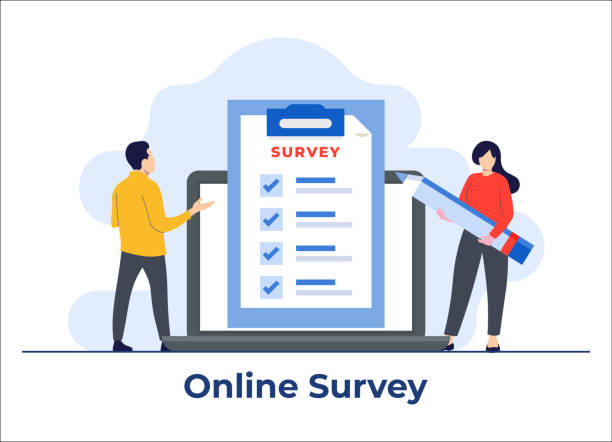
Having a beautiful and content-rich personal website is useless if no one can find it.
This is where Search Engine Optimization (SEO) comes into play.
SEO is a set of techniques that help your website achieve a higher ranking in Google and other search engine results.
This is a technical but essential aspect of the personal website design process.
The first step in SEO is keyword research.
You need to identify the words your target audience searches for on Google to find services or information related to your field.
Then, naturally embed these keywords in your website’s titles, headings, text, and meta descriptions.
In addition to text content, optimizing images (using Alt tags and compression to reduce size), improving website loading speed, and ensuring the website is responsive for various devices are also important SEO factors.
Building internal links between different pages of your website and striving to acquire backlinks from other reputable websites also help your website’s credibility.
A sitemap and Robots.txt file are also important tools to help search engine crawlers understand your website’s structure.
This stage involves a detailed analysis of your website’s performance after launch and requires continuous monitoring and updates.
By correctly applying SEO principles, you will have a better chance of being seen by new audiences and attracting organic traffic to your website, which significantly contributes to the overall success of your personal website design.
Hosting, Domain, and Security of Your Website
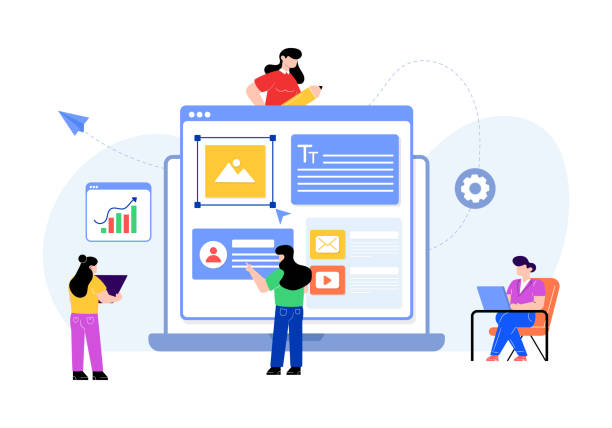
After completing personal website design, it’s time for crucial technical considerations: choosing suitable hosting, registering a domain, and ensuring website security.
These three elements are the main pillars of a stable and reliable online website.
Hosting is the space where your website files are stored on servers connected to the internet.
Choosing a reputable and high-quality hosting service directly impacts your website’s loading speed and stability.
There are various types of hosting, including shared hosting, VPS, and dedicated servers.
For a personal website, shared hosting is usually an economical and suitable option, but if you expect high traffic or need more resources, you might require a VPS.
Domain is your website’s address on the internet, such as `yourname.com` or `yourname.ir`.
Choosing a short, relevant, and memorable domain is very important.
To register a domain, you need to contact domain registrars and ensure the availability of your chosen name.
Website security is a very serious matter.
Your website must be protected against cyber attacks, malware, and unauthorized access.
Installing an SSL certificate (Secure Sockets Layer), which changes your website’s address from HTTP to HTTPS, is essential.
This certificate not only encrypts the communication between the user and the server but also helps improve your website’s SEO.
Regularly updating the platform (like WordPress), plugins, and themes, using strong passwords, and installing security plugins are among the key measures to maintain the security of your personal website.
These are technical aspects that require precision to provide a positive user experience for both visitors and website owners.
| Factor | Importance | Key Points |
|---|---|---|
| Host Speed and Stability | Very High | Server Response Time (TTFB), High Uptime (99.9%+), CDN Support |
| Host Technical Support | High | 24/7, Multiple Communication Channels, Fast Response |
| Host and Domain Price | Medium | Commensurate with Features, No Hidden Costs, Initial Discounts |
| Domain Transfer and Management | Important | DNS Management Capability, Easy Renewal, Transferability |
Website Maintenance, Updates, and Technical Support

Personal website design is just the starting point; its long-term success depends on maintenance, regular updates, and continuous technical support.
A dynamic website is one that is always evolving and improving.
This includes updating your content, themes, plugins, and core platform (e.g., WordPress).
Neglecting these updates can lead to security issues, reduced performance, and incompatibility with new browsers.
Regularly back up your website to prevent data loss in case of any issues.
Many hosting services offer automatic backup options, but it is always recommended to also have manual backups stored in different locations.
Technical support is also of high importance.
In case of errors, malfunctions, or the need to apply technical changes, access to a strong support team or sufficient knowledge to troubleshoot problems is crucial.
This tutorial section teaches you how you can fix many common problems yourself with available tools and online guides.
Also, monitoring website performance with tools like Google Analytics helps you understand visitor behavior and identify your website’s strengths and weaknesses.
This continuous analysis will guide you in continuous website improvement.
Proper website maintenance not only helps preserve its security and performance but also keeps your website looking fresh and appealing, providing a positive user experience for visitors.
Are you tired of your e-commerce website not generating as much revenue as it could? Rasaweb, specializing in professional e-commerce website design, solves this problem permanently!
✅ Increase sales rate and revenue
✅ High loading speed and exceptional user experience
⚡ Get a free e-commerce website design consultation
Methods to Increase Traffic and User Engagement
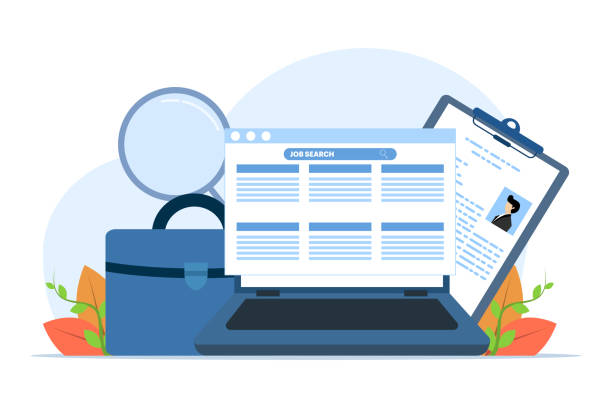
After designing your personal website and ensuring its proper functionality, the next step is to attract visitors and encourage them to interact.
Increasing traffic is not achieved solely through SEO; you must use various channels to market your website.
Content Marketing is one of the most powerful methods.
By producing valuable, educational, or entertaining content that answers your audience’s questions and needs, you can increase organic traffic.
Sharing this content on social networks such as LinkedIn, Instagram, and Twitter helps your content gain more visibility.
Email Marketing is also an effective method to maintain communication with visitors and bring them back to your website.
You can build your email list by offering exclusive content or news.
Activity in forums and specialized groups related to your field, and providing useful comments with links to your website, can help attract targeted traffic.
Of course, this should be done in a way that is not considered spam.
To increase engagement, enable the comment section on your blog and respond to user comments.
Using contact forms, surveys, and social sharing buttons all contribute to greater interaction.
Also, thought-provoking content and challenging content can stimulate discussion.
A Frequently Asked Questions (FAQ) section can also help answer common visitor questions.
By implementing these guidance strategies, you can turn your personal website into an active hub for your target community and leverage the maximum potential of your personal website design.
Using a Personal Website for Branding and Career Opportunities

Personal website design goes beyond a mere display space; it is a powerful tool for personal branding and opening doors to career opportunities.
Your website is your digital storefront that allows you to tell your story, share your values, and showcase your expertise in a unique way.
For effective branding, ensure your website reflects your personality and work style.
Use a consistent design, colors, and fonts that align with your visual identity.
Your content should be specialized, credible, and written in your brand’s voice.
Write your “About Me” section carefully and engagingly; this section is an excellent opportunity for human connection with visitors.
In terms of career opportunities, your personal website can act as a dynamic online resume.
Instead of sending static paper resumes or PDF files, you can directly refer potential employers to your website.
On this website, you can showcase your portfolio with more details, including images, videos, and project descriptions.
Include testimonials and feedback from previous clients or colleagues on your website to validate your credibility and skills.
Educational or analytical content you publish on your blog can establish you as an expert in your field and attract the attention of potential employers or collaborators.
This is also a news tool for communicating your achievements and progress.
With a targeted personal website design, you not only create an online resume but also build an active platform for professional networking and attracting new opportunities for yourself.
Frequently Asked Questions
| No. | Question | Answer |
|---|---|---|
| 1 | Why should we have a personal website? | A personal website allows you to professionally display your resume, portfolio, experiences, and perspectives, strengthening your personal brand. This helps increase career and networking opportunities. |
| 2 | What content should we include on a personal website? | It usually includes “About Me,” “Resume” (skills and experiences), “Portfolio” (projects and achievements), “Blog” (articles and insights), and “Contact Me” sections. The content should align with your website’s purpose. |
| 3 | What is the best platform for building a personal website? | WordPress is a very popular choice due to its high flexibility, numerous themes and plugins, and large user community. Platforms like Wix and Squarespace are also suitable for beginners. |
| 4 | What points should be considered when designing a personal website? | Responsive design for proper display on mobile and tablet, high loading speed, simple and appealing User Interface (UI) and User Experience (UX), and Search Engine Optimization (SEO) are key considerations. |
| 5 | How to choose a suitable domain name for a personal website? | It is best for the domain name to be simple, short, memorable, and relevant to your name or personal brand. Using common extensions like .com, .net, or .ir is recommended. |
| 6 | What is the importance of the Portfolio section on a personal website? | The portfolio section is the most powerful tool for showcasing your skills and completed projects. This section helps potential employers or clients tangibly see your capabilities and build greater trust in you. |
| 7 | Is adding a blog section to a personal website useful? | Yes, a blog allows you to share your expertise through articles and writings, interact with your audience, and improve your site’s ranking in search engines by producing fresh content. |
| 8 | How can a personal website be made to look professional? | Using a clean and modern design, a high-quality and professional profile picture, writing content without spelling or grammatical errors, and ensuring all links and forms function correctly significantly contribute to a website’s professionalism. |
| 9 | What does personal website maintenance and updating involve? | Regular content updates, checking link and form functionality, consistent data backups, and updating the Content Management System (like WordPress) and plugins are essential for maintaining security and proper operation. |
| 10 | How much does it cost to design and maintain a personal website? | The cost can vary. It includes domain purchase (around $15-50 per year) and hosting (around $50-200 per year). Using free themes or paying for premium themes and plugins also affects the overall cost. |
And other services of Rasaweb advertising agency in the field of advertising
Smart Reportage: A combination of creativity and technology for digital branding through optimizing key pages.
Smart UI/UX: An effective tool to improve SEO ranking by utilizing real data.
Smart Advertising Campaign: Revolutionize user interaction with custom programming.
Smart UI/UX: A specialized service for increasing sales growth based on the use of real data.
Smart UI/UX: Professional optimization for digital branding using key page optimization.
And over a hundred other services in the field of internet advertising, advertising consultation, and organizational solutions
Internet Advertising | Advertising Strategy | Advertorials
Sources
Personal Website Design Guide
How to Create a Personal Website?
Personal Website Tutorial
SEO Tips for Personal Websites
? Rasaweb Afarin: Your business’s gateway to the fast-paced digital world! Build a bright future for your brand with our professional services, including fast and optimized website design.
📍 Tehran, Mirdamad Street, next to Bank Markazi, Kazeroun Jonoubi Alley, Ramin Alley, No. 6

